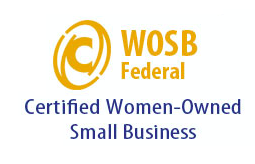
Creating a culture of inclusion takes work. A lot of work. And like most cultural and behavioral shifts, it starts with leaders understanding how their mindsets, actions, reactions and decisions affect how employees perceive them. As leaders striving to be inclusive, the first thing we must ask ourselves is whether those around us feel psychologically safe enough to share their thoughts and ideas without fear of reprisal. Unfortunately, many times, the answer is no.
The idea of psychological safety has been around for a long time, but renowned behavioral scientist Dr. Amy Edmondson said it best when she defined it as “...a shared belief held by members of a team that the team is safe for interpersonal risk taking...”
The reality is that many leaders do not realize the impact their statements have on people’s willingness to speak up or put forth ideas for fear of rejection or humiliation. Leaders must recognize whether their organization’s culture encourages all employees to feel comfortable and confident to share their ideas. As Dr. Edmondson says in her book The Fearless Organization: Creating Psychological Safety in the Workplace for Learning, Innovation, and Growth, "people must be allowed to voice half-finished thoughts, ask questions out of left field, and brainstorm out loud" in order to create a culture that truly innovates.
Think of it this way. Psychological safety is an evolution of inclusion.
According to Harvard Business Review, those at high-trust companies, like those that provide psychological safety, experience many benefits including a reduction in turnover, 76% more engagement, 50% more productivity, 74% stress, and on and on. Contrast that with $600 billion a year lost on employee turnover, and I think we’re on to something.
Leading companies already recognize psychological safety as a key to unlocking team potential. Accenture research shows that when employees experience psychological safety, they are five times more likely to experience increased performance at work. And when performance is high, innovation follows.A favorite book that I like to recommend to leaders was written by Dr. Timothy Clark. It defines the four stages of psychological safety as creating a workplace climate where people feel:
- Included (invited in, asked to participate, trusted, etc.)
- Able to learn (make mistakes, ask naïve questions, try, etc.)
- It is safe to contribute (knowing feedback will be constructive)
- It is safe to challenge the status quo (without risking reprisal)
At Leading NOW, when we talk to clients about inclusion, we talk about the value of diverse perspectives, and the many benefits they bring to the table, not the least of which is that diverse organizations are 35% more likely to have financial returns above industry average and 70% more likely to capture new markets.
Simply put, in order to reach these business outcomes for your organization, you must make good decisions. To get to good decisions, you need to have diversity of thought and groups of people with different life experiences who may be better able to recognize problems and offer up creative solutions than groups with similar life experiences.
In other words, if companies want to innovate, they need to have all the voices at the table willing to speak up and be heard. The only way to get there is to create a culture of psychological safety.
To create a culture of psychological safety, leaders should follow these 5 tips:
- A good leader is viewed as a collaborator, not an opponent.
- A good leader practices empathy and takes the time to explore what the other person feels.
- A good leader assumes positive intent instead of challenging or competing with you.
- A good leader replaces blame with curiosity and understanding first.
- 5. A good leader asks for feedback on the way you are working with them by inviting people in.
 This article was originally written for the Forbes Human Resources Council, and published on the Forbes website in March 2023. You can see Kelly Lockwood Primus' other Forbes articles on her author page.
This article was originally written for the Forbes Human Resources Council, and published on the Forbes website in March 2023. You can see Kelly Lockwood Primus' other Forbes articles on her author page.







